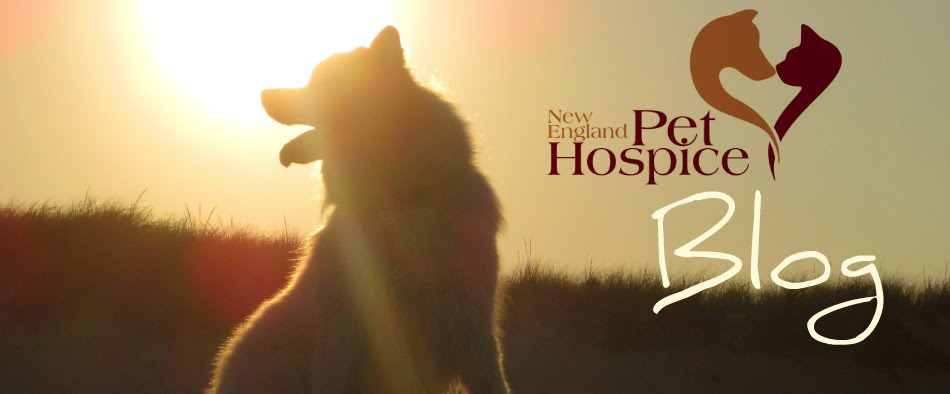The first time I witnessed a being die naturally, it was a shock to me. I expected a gradual and steady decline. I was completely unprepared for the ups and downs of the dying process and my own emotions.
If you haven't experienced the natural death of a being, do you imagine it is a straight line of decline? One thing, one system, one piece of your loved one slowing down, shutting down, dying over whatever time he or she has left?
I did.
But in that first death, and others I have witnessed since, that was not the case. It was an up and down process. There were multiple times when I thought it was over, she was not coming back to us, and then, miraculously she opened her eyes, spoke coherently and our family was able to share the gift of a few more minutes, a few more words.
In our work, we hear many stories of this happening. One woman told me her dog had stopped eating, no longer lifted her head to greet the family and seemed to have lost all will to live. The family scheduled their vet to come to their home the next day for euthanasia, they said their goodbyes and brought the dog into their bed to sleep for the night. The next morning, the dog ate heartily, wagged joyfully and clearly expressed a desire to live. A year after that day, the dog - though still dying - was also still alive.
Why and how does this happen? How can you be so close to death's door and yet bounce back? Ask any doctor or veterinarian who works with the dying how long a being has to live after a diagnosis of a certain disease and the only honest answer is "it depends". It depends on the age, health, strength and fitness of the individual and the stage of illness, aggressiveness of disease and available treatments.
But it also depends on something else - something we don't fully understand and cannot measure, something that varies greatly from being to being. Sometimes we see it as a being holding on for a special event or letting go when a loved one passes. Sometimes we see a being adapt to his or her new limitations and find a way to live. We see animals who could not move and had seemed to give up, get new life when given a mobility aid. Or an animal holding on because of the family's despair.
Witnessing the dying process is a lesson in living in the moment. We do not know what the next moment will be - it may be better or it may be worse or it may be just the same. This can be very frustrating, confusing and emotionally difficult. While we try to prepare ourselves for our loved one's death, we never think to prepare ourselves for his or her dying process.
The dying process is often an ambiguous, unpredictable and emotionally draining experience. While it may sometimes be a straight and steady road where the end can be seen and anticipated, it is more often a winding country road where the end is obscured and you must take each curve as it comes, sometimes giving you true moments of beauty even on route to the final destination.



What a beautiful, sad post. Living in the moment is something that I always need to be reminded of.
ReplyDeleteExcellent article Heather. Thank you!
ReplyDeleteThank you Tammy and Kelly for reading and sharing. There are always beautiful moments on the journey if we are able to stop and notice them.
ReplyDelete- Heather
Founder and Team Leader
New England Pet Hospice
Beautifully written and so true! Having experienced this myself, my dog, Max, ultimately taught me the true meaning of Carpe Diem.
ReplyDelete'LIVING LIFE TO THE MAX' has, since his death, become our new slogan.
Thank you for sharing this.
MAXMOM IN SOUTH AFRICA
What a wonderful way to honor and remember your companion, Mom. Thank you for sharing.
ReplyDelete- Heather